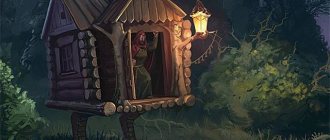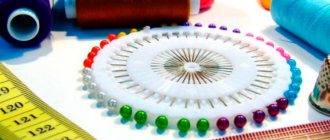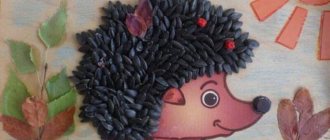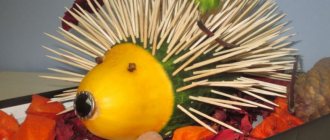- 36892
- 10-01-2018
- Author: Mysekret Team
- 0
With the onset of summer, you want to add colorful summer dresses to your wardrobe. But you don’t always have the time and opportunity to buy yourself several new products. Therefore, we suggest you sew them yourself! Your product will be exclusive and exactly the way you want!
This season, white simple dresses and sundresses made of light fabric are very popular. They can be either classic or with embroidery or other accessories. These models are suitable for girls of any body type and height.
Dimensions
Calculation of the fabric consumption used to create dresses with your own hands is done in accordance with the size of the model. Measure:
- Waist and hips
- Back length to waist
- Front length to waist
- Width of back and chest
- Shoulder width
The dimensions are laid out on a paper pattern, cut out, pinned to the material with pins and outlined.
List of necessary tools and materials for sewing a knitted dress
The most important tool is a sewing machine, which can handle sewing knitwear, since the fabric is quite slippery and sometimes inaccessible.
Also useful:
A set of tailor's scissors, large, small, medium, for cutting large pieces of fabric, cutting out decor, forming appliqués.
A large ruler for making even marks on the fabric;
A measuring tape, without which it is impossible to take measurements;
Thimble;
A set of needles, both for machine and handmade. Again, there is no need to save money; high-quality accessories are much more pleasant to use and handle, saving nerves, time and effort;
Seam ripper. Mistakes are an integral part of learning. To rip out a failed seam, it is better to purchase the appropriate tool; it will help you do this with minimal effort; the threads can be pulled out without leaving marks or harm to the material;
Graph paper. Against its background, it is much easier to work with both small and large pieces of material;
A set of tailor's pins with a cushion, inside of which there is a special filler that protects the pins from corrosion and oxidation during long-term storage;
Iron with ironing board;
Tools for marking and transferring patterns onto fabric. The simplest option is a piece of old soap or chalk, but it is better to purchase a special marker, it is much more pleasant to work with, it leaves marks equally well on synthetics and natural fabrics.
Set of threads. Many beginners think that threads from old stocks inherited from their grandmother will be enough for learning, but this is not so. They often cause a lot of trouble even when done manually; they constantly tend to tear and get tangled.
Knitted dress pattern
The simplest and most reliable way to make a pattern is to use a ready-made drawing or take an old dress as a base. Now you can find absolutely any sketch of the model you are interested in in various variations, since knitwear has long come into fashion as an excellent material for sewing dresses.
For those who know how to work with ready-made patterns, we will leave a few of the most common options for you to familiarize yourself with:
If this is your first time encountering the construction of patterns, then video tutorials and visual examples of construction will best help you with this.
Fabric selection
Depends on the season of the year and the style of the product. Fabrics are made from natural materials, synthetic and mixed composition.
It’s easy to sew a summer dress with your own hands from cotton fabric: chintz, satin, flannel, cambric. This outfit is soft and does not interfere with the evaporation of moisture from the body.
Natural linen material wrinkles easily. Does not cause allergic irritation. Products made from silk fibers have a translucent texture, are extremely pleasant to the body, do not stretch, and are used to make dresses with drapery. Requires careful handling when washing.
Synthetic materials are produced on the basis of polyester. They are durable and come in a variety of colors. They do not allow moisture to pass through and are electrified.
To improve the quality of natural fabrics, synthetic fibers are added to the composition, creating durable and elastic fabrics.
To make warm outfits, thick fabrics are used: wool, knitwear. The material will give a clear outline to the dress.
Plain knitted
If you haven’t yet acquired a summer dress for every day, then it’s time to sew a simple model like this with an original print that doesn’t require a complicated pattern or even darts.
Choose knitted fabric that is thin and elastic, with a high cotton content. This way the dress will allow air to pass through well, and thanks to the addition of artificial threads, it will stretch but not wrinkle. This model is also suitable for cool weather, just choose a thick fabric.
Before cutting, iron the cut with a hot iron. Instead of a pattern, use a well-fitting T-shirt with sleeves.
1. Fold the knitwear in half along the grain, attach the T-shirt and trace it with soap or chalk.
2. Extend the skirt of the dress to the desired height. Adjust your hip size. If they are curvy, then make the necessary increase.
3. Cut out the front and back, not forgetting the seam allowance, about 1-1.5 cm.
4. You can make the front neckline deeper or smaller and of the desired shape.
5. When attaching the T-shirt, cut out the sleeves.
6. Next, cut out and stitch the neck facing. To do this, attach the front and back bodice, and outline the neckline. Make the width 5 cm.
7. Sew the shoulder seams using a zigzag stitch. This way you can process the cuts right away.
8. Sew in the sleeves, aligning the shoulder cut and the middle of the sleeve, and then securing with pins.
9. Sew the side seams, aligning them with the seams on the sleeve.
10. Fold the bottom of the dress.
Simple model of medium length
Sewing without patterns with your own hands includes the choice of material and model. Products created without complex calculations are capable of surpassing purchased items. The quality of the material, neat seams, and fit are important.
For a product with a design similar to the “bat” silhouette, there is no need to take large-scale measurements. You can quickly sew a dress with your own hands without a pattern:
- The cut is placed on the work table, the width of 1.5 m will be equal to the length of the product. Fold in 4 layers.
- The upper left corner is cut off, forming a round neckline.
- With chalk, mark a distance of a quarter of the hip volume from the left edge. Draw a line through this point up to a height up to the inner edge of the sleeve, approximately 60 cm. Make seams to this length, unfolding the fabric, leaving 2 layers.
- The seams are processed. Flowing material fits, sleeves fall in waves. The clothes are suitable for everyday wear.
A simple sundress for beginner craftswomen
This summer dress does not require a pattern and can be sewn in a maximum of an hour - just what a beginning craftswoman needs!
During the work we will use the following tools and materials:
- a plain women's T-shirt (preferably gray, white or black);
- a piece of colorful cotton or linen (it is important that the fabric and the T-shirt go well with each other);
- marker for drawing on fabric;
- sewing pins;
- ruler;
- sewing threads;
- elastic thread (spandex);
- needle;
- sewing machine;
- well-sharpened tailor's scissors.
A knitted top will favorably emphasize the chest, a high waist will hide all the minor imperfections of the figure, and a wide belt will be the final touch and give the dress a complete look.
Using the description below, you can easily sew dresses of size 46, but if you have more curvaceous figures, it can be adjusted to sew a sundress of size 48-50. The length of the sundress can be chosen at your discretion.
How to sew sundresses from a T-shirt: a step-by-step master class
Stage one
We put the T-shirt on ourselves and mark the waist level along it with a pencil or marker, then raise it by about 6 cm. Next, lay the T-shirt on the table and draw a line parallel to the bottom of the product, leaving a seam allowance of 1.5 cm.
Stage two
We measure the hips and multiply the resulting number by 1.5 - as a result, we get the required width of the skirt that we will cut out. We draw a rectangular blank along the fabric, where the width is the volume of the hips x 1.5, and the length is at your discretion. This sundress is optimally sewn to the floor;)
We place the length of the skirt on the fabric along the grain thread - this is necessary so that the future sundress does not become deformed during wear. We cut out the blank for the skirt, leaving seam allowances on each side - 1.5 cm for the side seams and another 4 cm in length for the hem.
Stage three
Now we need to connect the edges of the skirt, wrong side up. To avoid the fabric slipping when sewing on a machine, we baste the side seam by hand or pin it with regular sewing pins, placing them perpendicular to the future seam. Sew the seam with a straight stitch, remove the pins and overlock the center seam and the top edge of the skirt. If you don't have one, we recommend using a zigzag stitch along the edges.
Stage four
Next we need to gather the skirt at the waist using an elastic thread. It is more convenient to wind it onto the bobbin manually with light tension. To adjust the length of the stitches and the correct thread tension, we make several small lines on a small piece of fabric. After this, we sew the floor along the entire width of the skirt, retreating from the edge a couple of millimeters. As a result, this thread will gently compress the fabric into a gather. The threads of the stitching need to be pulled out to the wrong side of the part and tied into a knot, and then cut off, leaving tails a few centimeters long each.
Stage five
We mark the middle of the back on the T-shirt, and the sides on the skirt. Place the T-shirt facing inside the skirt. We combine the seam on the skirt with the center of the back of the top, and the seams on the sides of the bodice with the marks on the skirt. We sew the parts together in any convenient way. Next, we need to sew the parts together with elastic thread at a level slightly below the elastic stitching on the skirt. In order for the spandex thread to gather the skirt again, we lay out the details of the dress with a T-shirt on top.
Stage six
We continue to sew a summer dress. We bend the bottom: we fold the edge of the workpiece twice, baste it and stitch it. Iron the side seam and hem of the skirt.
Stage seven
All that remains is to sew the belt! To do this, we cut out a rectangular blank 250 x 11 cm - this length will allow us to vary the knot and even tie a belt into a bow on almost any figure. If we don’t have such a long piece of fabric, we sew the belt from several pieces, be sure to lay out the seams in both directions and carefully steam them with a hot iron. Fold the blank for the belt in half lengthwise, face inward, and pin one short and one long side. We sew the belt with a regular stitch, leaving one short part unstitched.
Using scissors, we cut off the corners, retreating 3-4 mm from the seam - we do this to carefully turn the product inside out and avoid puffy corners. Next, turn the belt right side out using a pencil or safety pin. Carefully smooth the corners, giving them a neat shape. We align the belt, baste it along the edge and iron it with an iron, remove the basting. We turn the edges of the belt inward, iron it and stitch it.
We put on a dress for the summer, sewn with our own hands without a pattern, tie a belt and a stylish summer look is ready!
Evening dress
You can sew an elegant product with your own hands from one piece. The choice of material plays an important role here. Plain fabric looks attractive:
- Choose the length of the dress. The required width consists of the circumference of the hips and the supply of material for the smell.
- Process all seams at once.
- Thin straps are sewn to the upper corners; they look more harmonious.
- The fabric is wrapped around the figure, the ends of the cut are thrown over, covering the collarbones. Attach the straps to the back.
Summer dresses by purpose
How many summer dresses do you think a girl should have? The answer is simple - as much as she wants! Well, or at least one for each of the situations listed below.
- Dress for the office.
Ideal for the office sheath dress. But if for some reason this style does not suit you, focus on other models. The main thing is not to confuse a beach dress with a summer dress for the office! An open back, thin straps and minimal length would be inappropriate in the office.
- Sports style dress
. Comfortable, practical, wrinkle-resistant, easy to wash. If you have a lot of things to do today, wear a dress like this and comfortable shoes.
- Party dress.
Cocktail dress, open and form-fitting.
- Romantic dress
. Dresses in delicate colors, with frills and open shoulders. It’s nice to walk in such a dress, drink a cup of coffee in a summer cafe overlooking the sunset and go on a date!
- Evening Dress.
In summer there are a huge number of events, including concerts. An evening summer dress should be elegant, preferably with a long skirt.
- Beach dress.
Free, light, bright. It can be either short or long, as you prefer. It can be transparent, barely hiding a beautiful swimsuit.
Maximum length
To sew a dress without a pattern with your own hands, you do not need any special skills. The bright pattern and lightweight material will create a wonderful look for your summer wardrobe. The product consists of two parts:
- Fold a 1.5 m wide section in two layers.
- From the left and right sides, they retreat 25 cm to the width of the sleeves. Vertical cuts of 45 cm are made. The sleeves and edges of the dress are sewn.
- The top edge is folded and stitched. An elastic band is passed through the hollow space.
- The sleeves are cut in half, rolled up and stitched. They skip the rubber band.
- The cut for the skirt is folded in half and stitched on the sides. Make gathers or folds. Process the bottom edge of the skirt.
- The parts are connected and stitched.
Easy way to make a pattern
Follow the instructions on how to sew a DIY dress for beginners. By length there are: short, medium length below the knees, maximally long skirts. The collar cutout is made in different geometric shapes.
To create an outfit with loose sleeves:
Draw a rectangle on a piece of pattern paper; it’s easy to create a model from it. The length is equal to the distance from the base of the neck along the back to the desired length of the product. The width is the distance between the upper edges of the sleeves. They are cut out monolithically with the outline of the clothing.
Sleeves are drawn by extending the outline from the edge of the neckline. It is convenient to mark an auxiliary line from the edge of the collar vertically down to the distance to the beginning of the sleeve. Draw a line parallel to the upper border of the rectangle, retreating downwards. Get the extreme corner of the sleeve. Mark the width of the armhole.
Cut out the pattern and apply it to fabric folded in four layers. Trace, retreating from the edges in order to process the seams later.
Cut out to get 2 identical parts with symmetrical sides. Sew down the halves, process the seams of the neck, sleeves, and hem.
The model is suitable for women wearing different clothing sizes. Smooth, flowing fabric and deep color will add elegance to the look. A leather or fabric belt with an ornament will be a suitable accessory for this outfit.
Gabardine dresses: styles and popular models
It cannot be said that gabardine is suitable for sewing only sheath dresses or summer sundresses. This material is universal; what can be sewn from it depends on the density of the fabric. In the 2017–2018 season, the most fashionable models of gabardine dresses are:
- Oversized is a real must-have for the modern fashionista.
- A maxi with a deep neckline is the best idea for an evening look.
- Asymmetrical models - with a shortened front of the product.
According to designers, safari dresses will be extremely popular in the summer. For the third season in a row, models with bare shoulders have not lost their relevance.
Gabardine dress shirt
For many fashionistas, a shirt dress is the most convenient wardrobe item for all occasions. Gabardine is an excellent fabric for sewing a long, feminine shirt that will harmoniously “fit” into a strict office dress code and at the same time attract the admiring glances of men. If you choose a long style, complement the look with stilettos (heels are not suitable, they will “weight” the look), massive earrings and a small clutch, then you can attend a special event in this look.
Features of products with a straight fitted silhouette
Gabardine is a fabric with extremely positive characteristics. The main feature of the material is its resistance to shrinkage - even after 10 washes the product will not change shape. Gabardine dresses with a fitted silhouette ideally hide figure flaws, even when it comes to cellulite. If you sew a product with a straight pencil style, you can visually add volume to your hips, if necessary.
The latest items straight from the fashion catwalks
A dress is the best detail from a wardrobe, which adds femininity, elegance, and speaks of a girl’s good taste. Despite many incomprehensible manifestations (for example, Saint Laurent leather minis, baggy floor-length robes from Salvatore Ferragamo), there were aesthetically attractive models on the fashion catwalks. This year, fashion in Europe, the USA and the post-Soviet countries will be set by romanticism and femininity. They are impressed by the following styles:
- Sophisticated maxi with a fitted silhouette made of gabardine and chiffon.
- A-line models with floral print.
To make the image look as feminine as possible, the products are complemented with lace and embroidery.
Fitted outfit
Patterns for beginners do not contain complex elements. Simple geometric shapes indicate parts of the product that remain to be cut out and sewn together:
- Draw the main parts on a rectangle. This model hugs the figure and is designed for small sizes.
- The side of the rectangle includes the length along the back and the length of the hem. The width is common for the back and chest parts. Will be adjusted with underbust darts.
- The depth of the collar is equal to the width of the straps. Round off the junction of the back, chest and sleeves, leaving the fabric to create a seam.
- Cut out two sleeves and grind them down, finishing the edges.
- Sew down the main parts, process the bottom edge and neck. A hidden zipper is inserted on the side.
- Connect all the parts. Hem the edges of the fabric. Create grooves according to the figure.
They are planning how to sew a dress with their own hands. Create a supply of the required color of thread, meter, paper, crayons. Properly selected fabric does not deform after washing. Store finished clothes in an upright position on hangers to prevent wrinkles from appearing. Things that stretch, fold and store on shelves.
Prints for summer dresses
Summer is a time of variety of colors. Elegant plain dresses, bright beach dresses, all kinds of flowers, butterflies, timeless polka dots, small and large checks, stripes of various widths.
If you plan to combine colors, pay attention to combinations of black and white, gray and delicate purple, pink and peach. Be careful with combinations of black with orange and blue for a day dress.
Plain models also look great. Use delicate colors - vanilla, milky, soft blue, light pink and so on.











